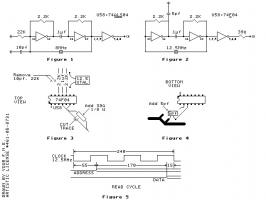Issue # 14 DTACK GROUNDED Newsletter - October 1982

@eZine
Published in
DTACK GROUNDED Newsletter
· 1 year ago

... m number from 1 to some limit such as 16. We call this 'N'. Then the host calculates N successive random values, each value ranging from 0 to #255. Thus, we have a string of random length composed of random values. We send the limit of memory (determined by the operator once when starting the program), N, and the random string to the 68000. Page 14, Column 2 The 68000 copies the string repeatedly end-to-end in the remaining available memory until the limit of memory is reached. Then comes a second pass during which those copies are compared back against the original string. In general, there will be no errors, so the 68000 reports the numb ...
